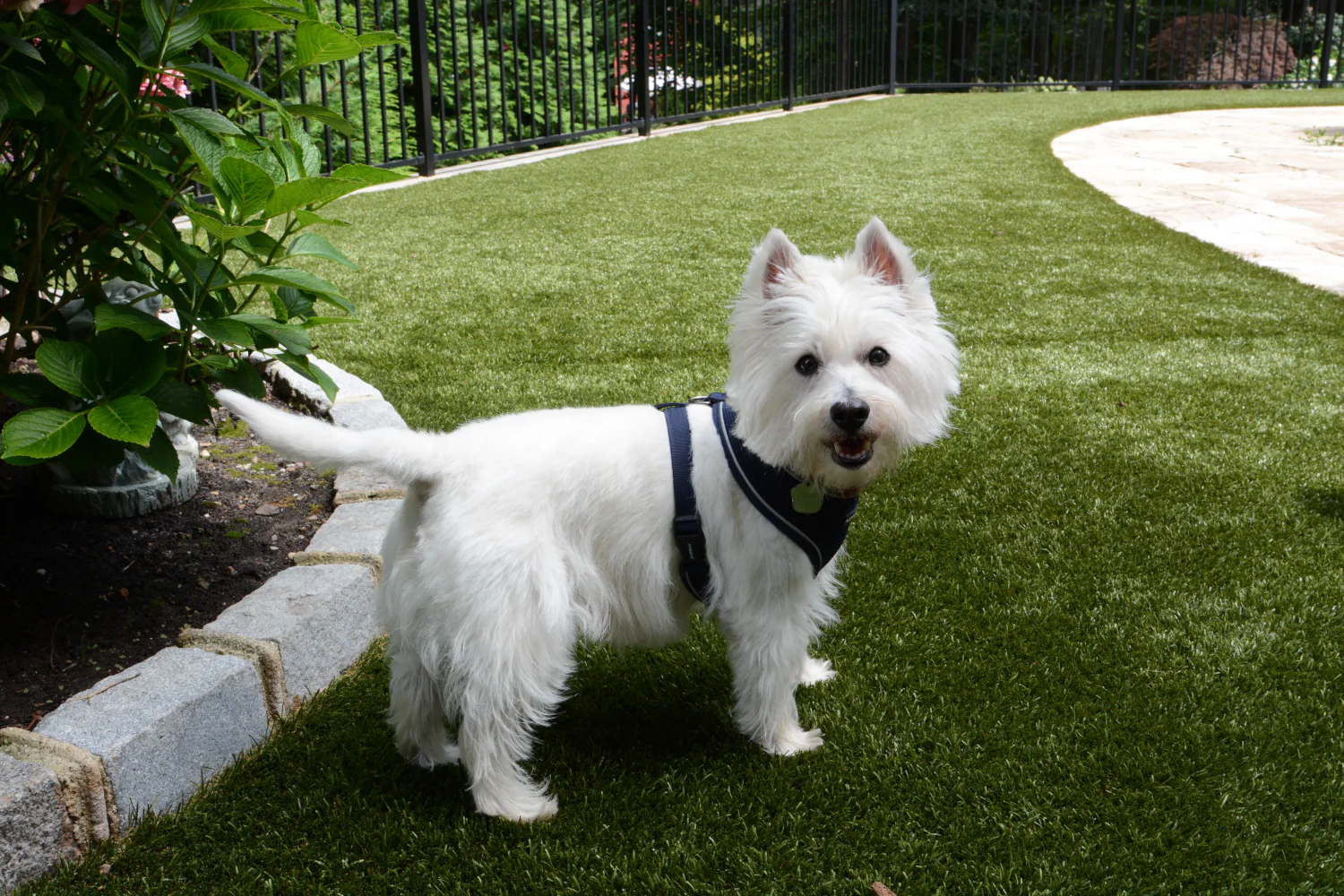How to Avoid Pet Turf Mistakes

You installed artificial grass for the low upkeep and clean look — smart move. But pets change the equation. Here’s a fresh take on the most common problems that happen to fake grass for dogs and exactly what to do about each of them, the easy way.
1. NOT PICKING UP DOG POOP
What happens: A forgotten pile hardens, sticks, or seeps into the infill.
Why it matters: Dried messes can collect harmful microbes and cause lasting marks.
Fast fix: Remove and throw away as soon as you can. If a mess stays, use a soft brush and a spray with water to lift it out.
Habit to build: Keep a pooper scooper and sealed trash bin near the yard for quick cleanups.
2. DOG PEE PATCHES
What happens: Dogs pick the same areas and urine pools there.
Why it matters: Bad smells and yellowed infill may follow.
Fast fix: Spray the area with water from time-to-time to prevent buildup, especially if weather is dry. For persistent odors, a enzyme spray made for artificial turf might be necessary when using normal sand infill. Using odor-resistant SWG/Shaw K9 sane stops odor completely.
Preventive move: Shift treat spots or use distractions to spread traffic around.
3. DIGGING, CHEWING, AND NAIL DAMAGE
What happens: Dogs scratch, chew edges, or their nails get snagged on seams.
Why it matters: Rips, loose edges, and damaged fibers wear it out early and create tripping spots.
Fix: Maintain paw care and re-secure any lifted edges with landscaping stakes or adhesive recommended by the turf maker.
Prevention: Give dogs a dedicated digging area and provide toys.
4. WATER DRAINAGE PROBLEMS
What happens: Water pools after storms or heavy use.
Why it matters: Puddles cause mildew and make turf soggy.
Fast fix: Remove debris from drainage channels. Check seams near drains to check for blockages.
When to call a pro: If the same spot keeps flooding, the base may need regrading.
5. MATTED OR FLATTENED FIBERS
What happens: Busy play areas start to look worn out and flattened.
Why it matters: Compressed infill traps dirt and debris and reduces cushioning.
Fast fix: Rake fibers upright with a soft-bristle broom.
Routine: Brush high-use areas once a month to keep blades upright.
6. USING THE WRONG CLEANING PRODUCTS
What happens: Harsh chemicals break down the backing and fibers.
Why it matters: Loss of color, damaged seams, and reduced turf life.
Fast fix: Flush with water thoroughly and choose pet and turf friendly products. A natural vinegar and water mix works for many scent troubles.
Note: Avoid solvent-based products and wire bristles.
QUICK CARE CHECKLIST
- Remove droppings within a few hours
- Wash pee areas at least once a week
- Brush fibers in busy spots monthly
- Place snacks on a mat
- Apply approved cleaners for synthetic turf
- Inspect drainage after heavy storms
NEED A DEEP PROFESSIONAL CLEANING
Everyday care can keep your artificial turf for dogs odor-free and staying neat. If you want a hand — from a deep clean to fixing drainage issues or topping up infill — Southwest Greens can step in and handle the heavy lifting so your turf stays pet-friendly and guest-ready. Contact us, and we’ll map out the best next step for your turf.
